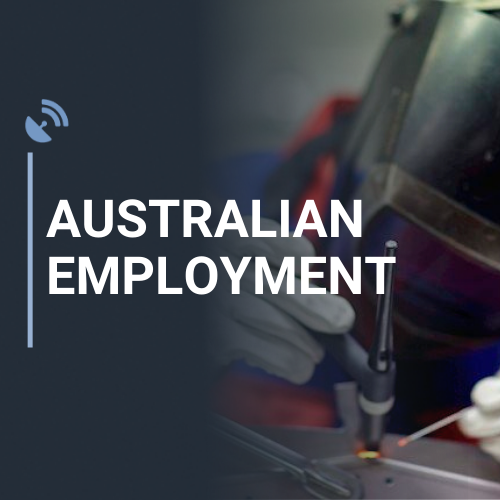Australian Unemployment Rate seen unchanged at 4% in June with solid job creation

- by Admin
- July 17, 2024

- The Australian Unemployment Rate is foreseen unchanged at 4% in June.
- Employment Change expected at 20K, down from the previous 39.7K.
- AUD/USD struggles to extend gains ahead of the announcement.
With sentiment dominating financial markets, the Australian Bureau of Statistics (ABS) will release the monthly employment report on Thursday at 1:30 GMT. The country is expected to have added 20K new positions in June, while the Unemployment Rate is foreseen to remain steady at 4%. The Australian Dollar (AUD) heads into the event with a firmer tone against its United States (US) rival, with AUD/USD trimming part of its early week losses.
The ABS splits the headline Employment Change figure into full-time and part-time positions. As a rule of thumb, full-time jobs imply working 38 hours per week or more and usually include additional benefits, but they mostly represent consistent income. On the other hand, part-time employment generally means higher hourly rates but lacks consistency and benefits. That’s why full-time jobs have more weight than part-time ones when setting an AUD directional path.
Back in May, the monthly employment report showed that Australia managed to create 41.7K full-time jobs but lost part-time positions, resulting in a net Employment Change of 39.7K. The Unemployment Rate contracted from the previous 4.1% to 4%.
Australian Unemployment Rate seen stable in June
As previously noted, financial markets anticipate the Unemployment Rate will remain steady at 4% and that the economy created 20K new positions in June.
The Australian Unemployment Rate peaked at 4.1% in April, matching the January reading and a level not seen since 2022. A higher unemployment rate usually signals a loosening labor market, allowing central banks to cut interest rates.
The Reserve Bank of Australia (RBA), however, maintained the Cash Rate at 4.35% in its June meeting and seems in no rush to cut interest rates. It is worth reminding that the RBA’s “duty is to contribute to the stability of the currency, full employment, and the economic prosperity and welfare of the Australian people.”
With that in mind, an easing Unemployment Rate and solid job creation will be seen as a tightening labor market, which means a further delay in potential interest rate cuts. In fact, the stronger the labor market, the higher the odds for a rate hike. The latest scenario is quite unlikely, given the risk it poses to economic growth, but speculative interest has not yet fully disregarded a potential rate hike. On rate cuts, bets keep moving forward, with the first potential trim in Australia foreseen in 2025.
When will the Australian employment report be released, and how could it affect AUD/USD?
The ABS will publish the June employment report early on Thursday. As previously stated, Australia is expected to have added 20K new job positions in the month, while the Unemployment Rate is foreseen at 4%. Finally, the Participation Rate is foreseen to hold at 66.8%.
The AUD/USD pair fell towards 0.6713 on Tuesday, clinching two consecutive daily losses despite an upbeat market mood that sent Wall Street into unexplored territory. However, stocks lost momentum, and the USD shed some ground with the pair bouncing from such a low and holding on to modest intraday gains at around 0.6740 ahead of the announcement.
From a technical perspective, Valeria Bednarik, Chief Analyst at FXStreet, notes: “The AUD/USD pair is bullish, although the momentum is missing. The daily chart shows a bullish 20 Simple Moving Average (SMA), partially losing its upward strength but still advancing below the current level and above mildly bullish 100 and 200 SMAs. Meanwhile, technical indicators hold onto positive levels, in line with the bullish case, but lack directional strength, suggesting investors are unsure where to go next.”
Bednarik adds: “AUD/USD has a strong static resistance level at 0.6770, with gains beyond it exposing the 0.6820/40 price zone. In the case of a bearish reaction, the pair will find support initially at around 0.6700, followed by the 0.6660 mark. As usual, the market will react not directly to the figures but to how those would affect the upcoming RBA monetary policy decision.”
Economic Indicator
Unemployment Rate s.a.
The Unemployment Rate, released by the Australian Bureau of Statistics, is the number of unemployed workers divided by the total civilian labor force, expressed as a percentage. If the rate increases, it indicates a lack of expansion within the Australian labor market and a weakness within the Australian economy. A decrease in the figure is seen as bullish for the Australian Dollar (AUD), while an increase is seen as bearish.
Australian Dollar FAQs
One of the most significant factors for the Australian Dollar (AUD) is the level of interest rates set by the Reserve Bank of Australia (RBA). Because Australia is a resource-rich country another key driver is the price of its biggest export, Iron Ore. The health of the Chinese economy, its largest trading partner, is a factor, as well as inflation in Australia, its growth rate and Trade Balance. Market sentiment – whether investors are taking on more risky assets (risk-on) or seeking safe-havens (risk-off) – is also a factor, with risk-on positive for AUD.
The Reserve Bank of Australia (RBA) influences the Australian Dollar (AUD) by setting the level of interest rates that Australian banks can lend to each other. This influences the level of interest rates in the economy as a whole. The main goal of the RBA is to maintain a stable inflation rate of 2-3% by adjusting interest rates up or down. Relatively high interest rates compared to other major central banks support the AUD, and the opposite for relatively low. The RBA can also use quantitative easing and tightening to influence credit conditions, with the former AUD-negative and the latter AUD-positive.
China is Australia’s largest trading partner so the health of the Chinese economy is a major influence on the value of the Australian Dollar (AUD). When the Chinese economy is doing well it purchases more raw materials, goods and services from Australia, lifting demand for the AUD, and pushing up its value. The opposite is the case when the Chinese economy is not growing as fast as expected. Positive or negative surprises in Chinese growth data, therefore, often have a direct impact on the Australian Dollar and its pairs.
Iron Ore is Australia’s largest export, accounting for $118 billion a year according to data from 2021, with China as its primary destination. The price of Iron Ore, therefore, can be a driver of the Australian Dollar. Generally, if the price of Iron Ore rises, AUD also goes up, as aggregate demand for the currency increases. The opposite is the case if the price of Iron Ore falls. Higher Iron Ore prices also tend to result in a greater likelihood of a positive Trade Balance for Australia, which is also positive of the AUD.
The Trade Balance, which is the difference between what a country earns from its exports versus what it pays for its imports, is another factor that can influence the value of the Australian Dollar. If Australia produces highly sought after exports, then its currency will gain in value purely from the surplus demand created from foreign buyers seeking to purchase its exports versus what it spends to purchase imports. Therefore, a positive net Trade Balance strengthens the AUD, with the opposite effect if the Trade Balance is negative.
The Latest News
-
December 23, 2024Freedom Boat Club Announces its 10th Australian Location with its Newest Location Offering Direct Access to the Iconic Brisbane River – Marine Business News
-
December 23, 2024‘I felt horrible’: How Brett Lee went from an ill-fated threat to Test stardom in four balls
-
December 23, 2024China and India Are the Biggest Tourism Market for Victoria As This Australian City Attracts International Tourists with Sports Tourism – Travel And Tour World
-
December 23, 2024Christmas comes early for several Aussies after last-minute dash for tour status – Australian Golf Digest
-
December 23, 2024Shami ruled out of Test return in Australia | cricket.com.au





